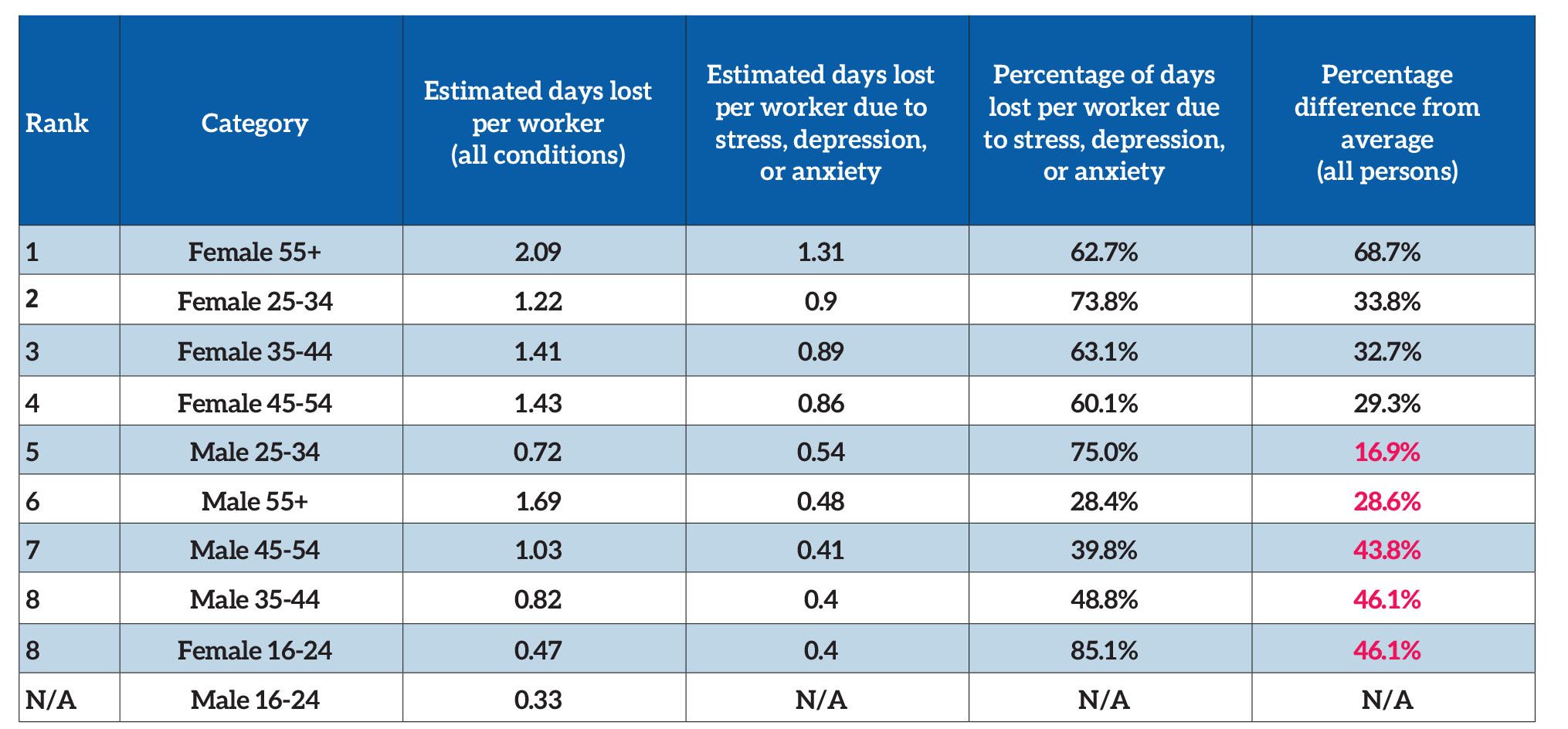Women aged 55 and over are most affected by mental health-related absenteeism in the UK, research has found this Mental Health Awareness Week.
The study by online therapy service Man Confidence shines a spotlight on emotional wellbeing in the workplace.
See also: CCLA’s Browne on mental health: Awareness is increasing but the gap is widening
Experts from Man Confidence analysed data from the Health and Safety Executive’s Labour Force Survey to determine which demographic groups experience the most workdays lost to mental health issues.
The analysis revealed that women of all age groups miss more work days due to poor mental health than men.
Women across all age groups miss more work days due to mental health issues than men, with an average of 0.91 days lost per female worker compared to just 0.44 days for males. This means women miss approximately twice as many workdays (107% more) due to mental health issues than men.
The study also found that, across all workers, stress, depression, and anxiety account for 55% of all working days lost, showing that, despite the greater impact on female workers, mental health challenges can significantly affect workplace productivity regardless of gender or age.
Demographic groups with the highest rates of absenteeism due to mental health issues in the UK

According to the findings, women aged 55 and over miss an average missing an average of 1.31 days of work annually due to stress, depression, or anxiety – the highest figure among all demographic groups and more than 68.7% above the national average of 0.64 days. This also represents 62.7% of all days missed among this age group.
Women aged 25-34 rank second, missing 0.9 days of work annually due to mental health conditions – this means 73.8% of days lost per worker due to stress, depression or anxiety, 33.8% above the national average.
The pattern continues with women aged 35-44, as they place third with 0.89 days lost annually due to stress, depression, or anxiety (32.7% above the national average), followed by women aged 45-54 in fourth position, with 0.86 days lost per worker (29.3% above the national average).
Male workers aged 25-34 are the first male demographic to make the ranking, with 0.54 days lost per worker – 16.9% below the national average. Workers in this age group take an average of 0.72 days off per year across all causes of absence, which means that absenteeism due to mental health actually accounts for 75% of all days missed.
See also: $2trn investor coalition targets tech on mental health and wellbeing
Men aged over 55 come next, with 0.48 days lost per worker annually due to mental health concerns, 28.6% below the national average. Given that this group averages 1.69 days of absence per worker each year, only 28.4% of their missed days are attributed to stress, depression, or anxiety – the lowest proportion among all male age groups.
In seventh place are men aged 45-54, with 0.41 days lost annually due to mental health issues (43.8% below the national average).
Tied for last are men aged 35-44 and, surprisingly, women aged 16-24, with 0.4 days lost per worker – 46.1% below the national average. However, despite placing last, female Gen Z workers have the highest proportion of days lost due to stress, depression, or anxiety (85.1% of all days lost), as they take an average of just 0.47 days off work across all conditions.
Dr. Junaid Hussain, psychologist at manconfidence.co.uk, commented on the findings: “Women are consistently taking more time off for mental health reasons across all age brackets, apart from those aged 16-24. What’s particularly striking is that while women over 55 show the highest absence rates, men in the same age group show much lower rates.
“What’s equally concerning is that while men take far fewer mental health sick days, they face three times higher suicide risk than women, as per the Office for National Statistics. This likely indicates that men aren’t seeking help or taking time off when they need it, instead pushing through mental health struggles at work.
“In any case, employers need to create supportive and human-first environments, which could lead to less work-related stress and anxiety among their employees, and help all workers to feel comfortable addressing mental health concerns and the need for some time off work to properly deal with these issues.”
“They should also recognise that lower absence rates among men don’t necessarily indicate better mental health. It might instead reflect reluctance to access support services or take time off. Workplace mental health initiatives need to specifically address these barriers while also supporting women, who are clearly experiencing significant mental health challenges.”








